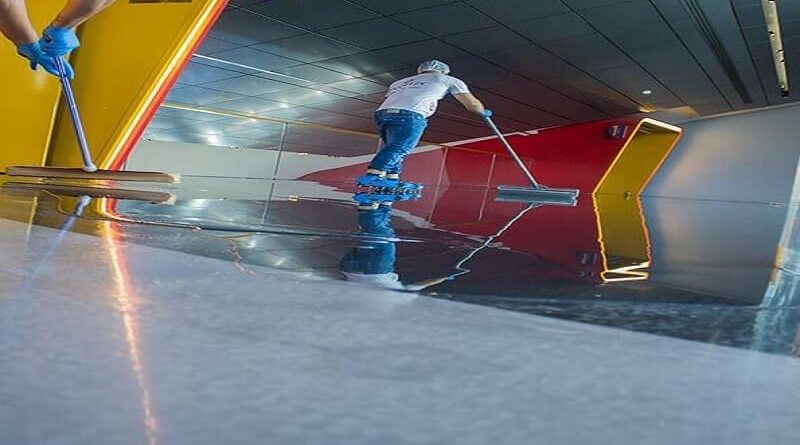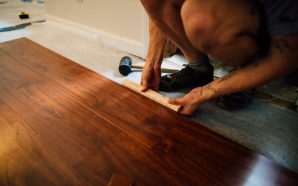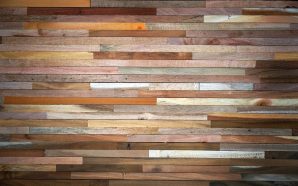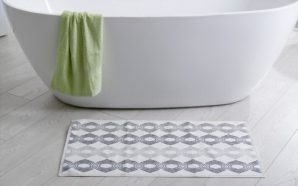Decorative concrete is one of the most sought-after flooring options for both indoor and outdoor spaces due to the many advantages it offers. These include durability, sustainability, affordability, versatility, and beauty.
The low-maintenance feature of a decorative concrete floor is also one of its best qualities which makes it a must-have flooring surface. It is easy to clean; simply sweep or mop the floor whenever it is dirty. You can also leave the wiping and tidy up to a cleaning robot.
Leading concrete flooring contractors also say that decorative concrete floors will only require re-applications of the finish every two years with normal traffic. This is because the coating makes it abrasive-resistant and even waterproof.
Because of its low-maintenance feature, you may want to consider placing decorative concrete at the top of your list for your residential or commercial floor construction or renovation project.
Preserving the Quality of Your Decorative Concrete Floors
Although a decorative concrete floor doesn’t have to be cleaned or treated regularly, to have an appealing floor that will last a lifetime, you need to put in extra effort to clean and maintain it from time to time.
Below are the best tips for doing so:
1. Use a broom, dry mop, or vacuum to remove dust, dirt, and debris
A dirty, gritty concrete floor is unappealing, whether it is indoors or outdoors.
Keep your floor free of dirt, dust, and debris by periodically broom sweeping or running a vacuum cleaner over the surface. If the concrete floor is located outdoors, use a leaf blower to tidy up the surface.
A dry microfiber mop can also be used to clean the surface and maintain a dust-free, slip-resistant surface. Keep in mind that if you don’t remove dust immediately, surface grit may develop and will act as an abrasive. This, in turn, may damage the finish.
2. Wipe up spills immediately
Whether the spill is water, soda, oil, or car fluid, make sure you wipe up the spill quickly using a clean damp cloth.
Allowing spills to remain can present a slip hazard and cause accidents. If you leave it long enough, it may soon stain your floor.
In addition, clean up animal urine as quickly as possible even if the floor is protected with a highly chemical-resistant finish.
3. Damp mop the floor occasionally
To thoroughly clean your floor, damp mop as necessary using a microfiber mop and clean water. Use cold water and never hot water since this may cause whitening to happen.
Before mopping, sweep up or vacuum the floor. This will allow you to remove any remaining dirt faster and easier.
If you will be tackling stubborn dirt and stains, use a neutral pH degreaser such as mild dish soap or cleaning liquid. Never use acidic or caustic cleaning products such as bleach and ammonia or even harsh detergents since they can slowly eat away the floor’s finish.
When using a cleaning solution, make sure to follow the manufacturer’s instructions. Always mop the entire floor in sections, rinsing the mop as you start working on a different area. Also, make sure there are no puddles of water remaining on the floor.
If you need to rinse the floor with water after mopping it with the cleaning solution, do so.
4. Avoid using harsh chemicals on concrete surfaces during winter
In case it snows in your area, avoid using deicing compounds containing salt, ammonium nitrate, and ammonium sulfate. This is because these products quickly attack and disintegrate many types of sealers. These substances damage most decorative surfacing systems as well.
Additionally, minimize or avoid using deicing products that contain magnesium chloride. This chemical can also cause moderate damage to concrete.
To make your driveway or walkway safe in the winter, remove all snow and ice as soon as possible. Pile them away from the edges of your concrete. For traction, use sand or cat litter. They are non-abrasive and won’t damage the concrete surface.
Additionally, when it is not snowing or raining during the cold season, thoroughly hose off the residual materials in the driveway. These substances include the deicing product you use, dirt, and grime. By doing so, you will keep the driveway or walkway clean and safe for use.
5. Protect the floor from dirt, nicks, and scratches
To minimize tracking in dirt, dust, and other debris or contaminants, put doormats outside entrances. If they get dirty or soiled, replace them immediately.
However, avoid using plastic or acrylic-backed mats since they contain plasticizers that will try to stick to the concrete coating or cause discoloration.
If you have a decorative concrete floor in the kitchen or living room, put felt pads or sliding casters under furniture or equipment legs when moving them to prevent scratching the finish.
In case you will be placing heavy furniture or equipment in the room, put throw rugs or fabric mats under them first. These features will protect the floor from scratches and nicks.
6. Refresh the sealer when necessary
Lastly, you may occasionally need to refresh your sealer.
Epoxy and urethane sealers typically last for five to ten years and even longer, if the floor is well-maintained.
If the surface begins to look dull and becomes hazy when scratched, consider refreshing the sealer. By doing this, you will prolong the life of your concrete surfaces. It will enhance their appearance, too.
If you don’t know when and how to refresh the sealer, ask your concrete flooring contractor.
A decorative concrete floor will give you years of great service. By cleaning and maintaining these surfaces properly, you will even prolong their functionality and attractive quality.









